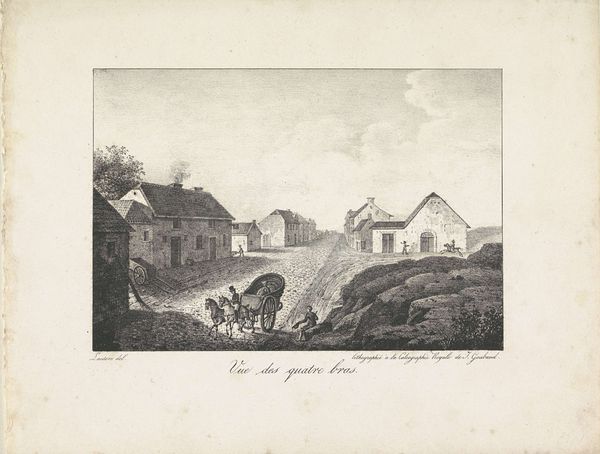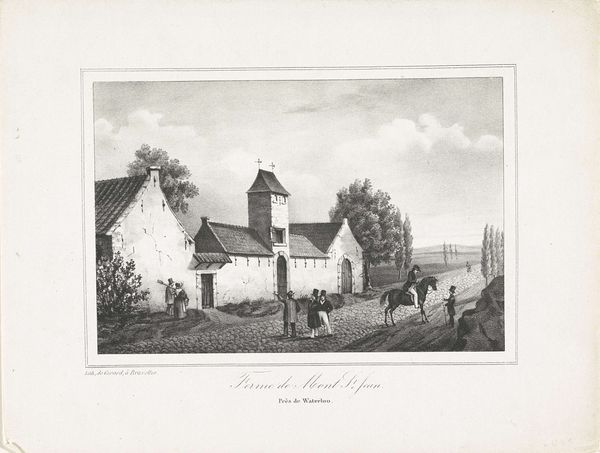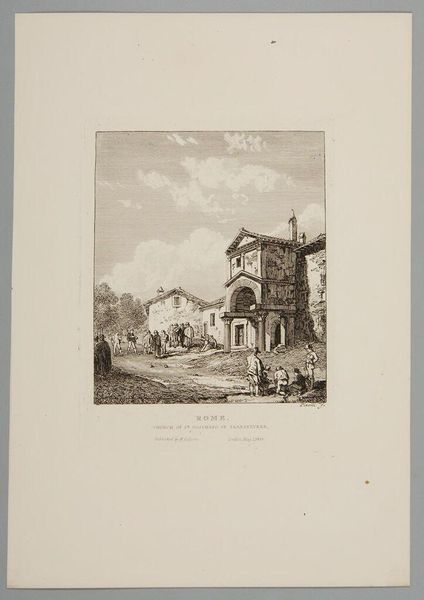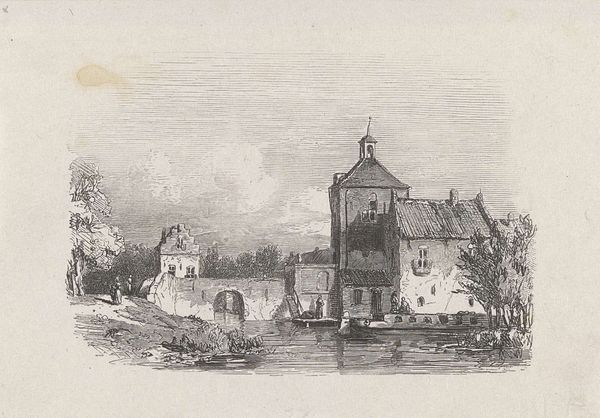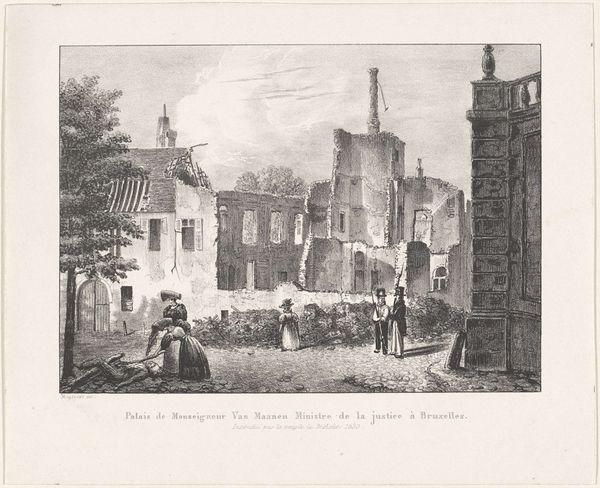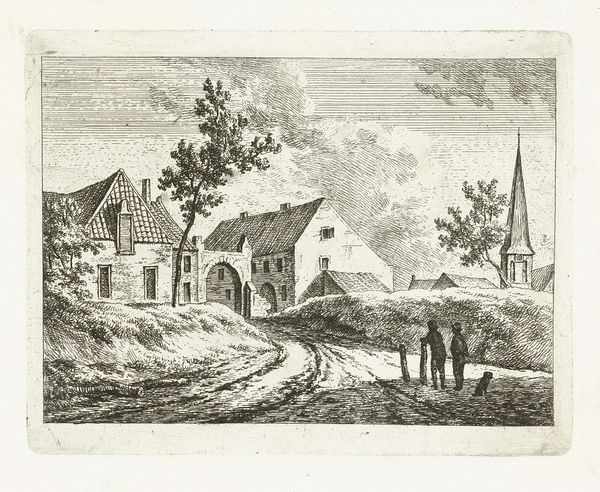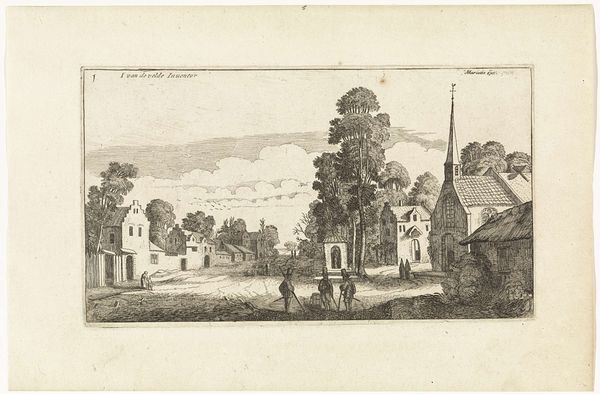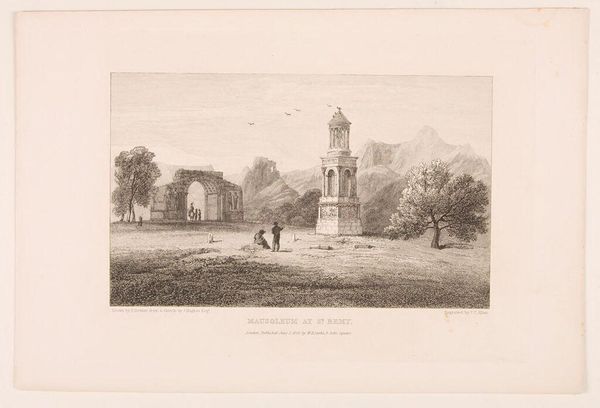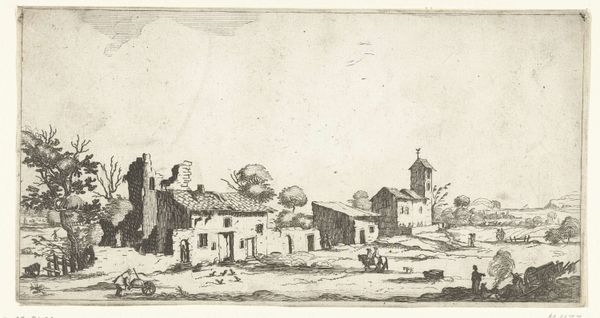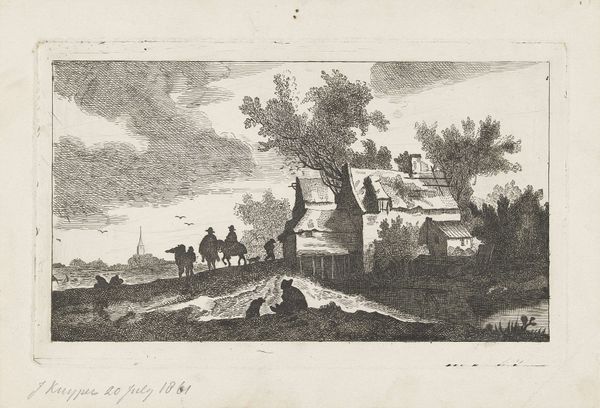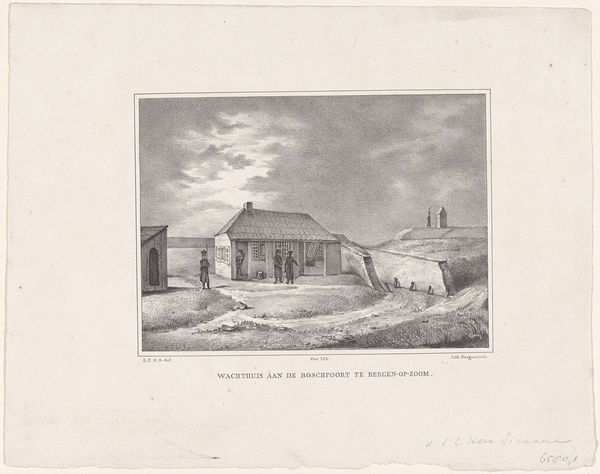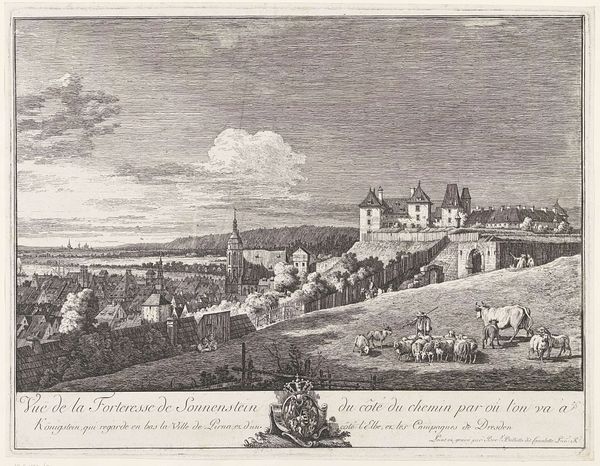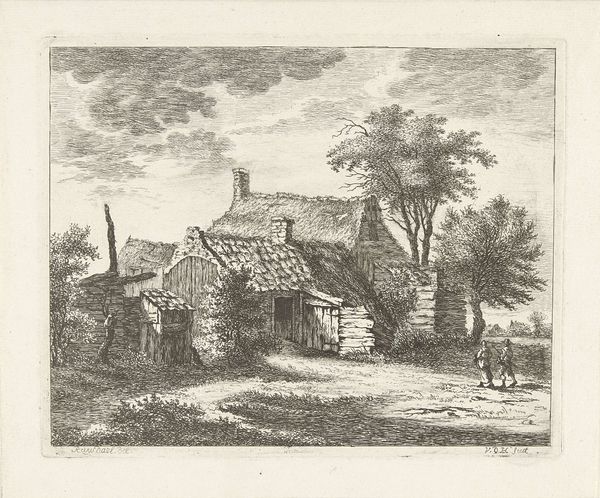
print, engraving
#
pencil drawn
# print
#
pencil sketch
#
old engraving style
#
landscape
#
cityscape
#
history-painting
#
engraving
Dimensions: height 213 mm, width 280 mm
Copyright: Rijks Museum: Open Domain
Editor: This engraving from 1842 by H. Gerard is titled "Ruïne van de hoeve van Hougoumont." The print portrays a scene of what appears to be a ruined farm, and there’s a somber feeling about the composition. What strikes me is the use of light and shadow to create such a poignant atmosphere. What do you see in this piece, from an art expert's perspective? Curator: Focusing on the intrinsic elements, the strength of this work lies in its tonal range and controlled linework. Observe how Gerard utilizes the hatching and cross-hatching techniques to model form and suggest depth, primarily creating dark versus light to construct an entire pictorial space from effectively one shade. What semiotic readings can we extract? Editor: Well, the ruins are definitely symbolic. The figures are so small. How would we go about interpreting that from a structuralist point of view? Curator: The deliberate scale discrepancy directs the eye towards the architectural decay, making the human figures subservient to the overarching theme of ruin and, perhaps, historical weight. Ask yourself how each structure is placed to best illustrate their relationship. Editor: That's a clever way to look at how proportion influences the narrative. Thanks for breaking it down through formalism; now I understand it better. Curator: Considering artworks this way shows us the underlying logic in visual representations. Hopefully, you have learned how vital close visual analysis and application of structuralist theory can be when deciphering art!
Comments
No comments
Be the first to comment and join the conversation on the ultimate creative platform.
